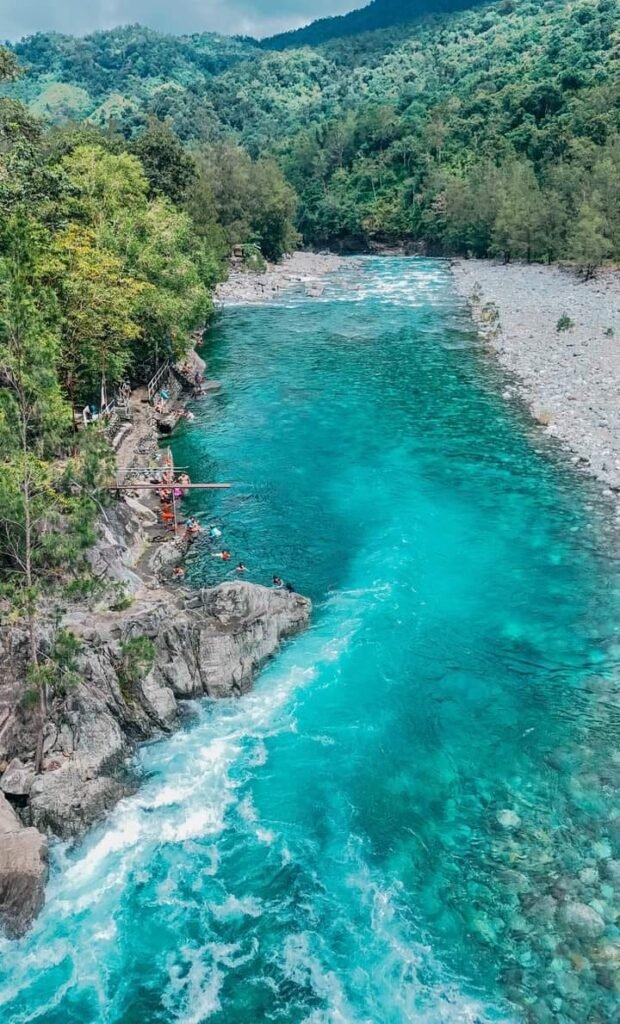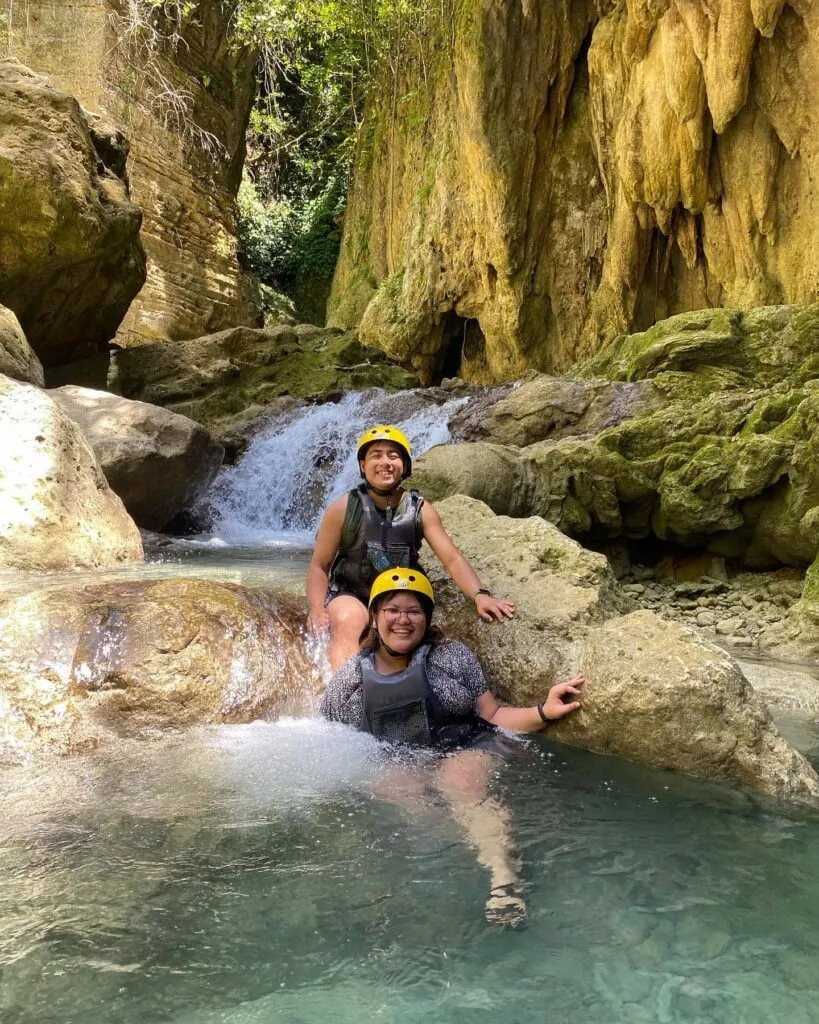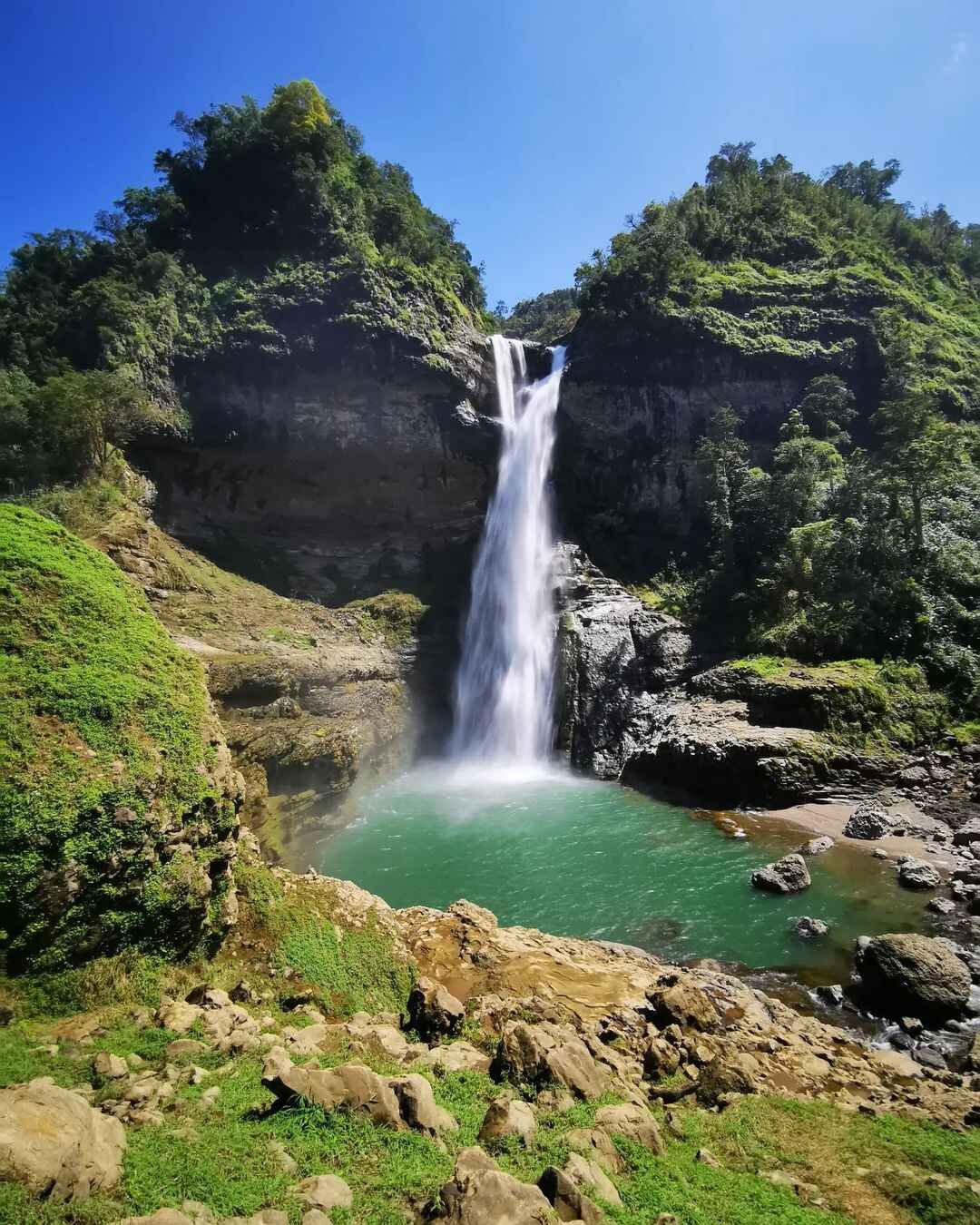
Introduction: Answering the Call of the Cordilleras
When I first heard whispers about aw asen falls in Sigay, Ilocos Sur, it sounded almost mythical—“the tallest waterfall in the Ilocos Region, hidden deep in the Cordilleras.” A few weeks later, as I finally stood at the trail’s first viewpoint, the story came alive before me: a massive white ribbon of water plunging roughly 120 meters into a deep, jade-colored basin. The roar echoed across the valley, carried by cool mountain winds. That moment made me realize that visiting Aw-asen Falls isn’t just a hike—it’s a pilgrimage through raw wilderness and serenity.
During my 2025 visit with the Sigay Tourism Office, I confirmed that this hidden giant remains one of the least commercialized destinations in Northern Luzon. No resorts, no restaurants—just forest, rock, and the rhythm of falling water. The journey tests both stamina and spirit: steep descents, slippery sections, and a climb that demands patience and hydration. But for those who come prepared, it offers something rare—a genuine eco-tourism destination in Ilocos that feels untouched by time.
If you’re wondering how to get to Aw-asen Falls from Manila, when to visit, or what to expect on the trail, this complete LakbayPinas guide covers every step—from routes and fees to firsthand tips for safe, sustainable travel.
Key Takeaway: Aw-asen Falls rewards those who respect its wildness—travel light, plan ahead, and let the Cordilleras remind you what untouched beauty truly means.
Table of Contents
Where is Aw-asen Falls Located?
Aw-asen Falls is located in Barangay Santo Rosario, Sigay, Ilocos Sur, tucked within the foothills of the Cordillera mountain range in Northern Luzon. For GPS reference, you can pin coordinates 17.08627° N, 120.58854° E—roughly 24 kilometers from the Tagudin town proper.
From Tagudin Junction (Bitalag), expect a 1 to 1.5-hour ride along winding mountain roads. From Manila, the full journey usually takes six to seven hours via major highways (NLEx–SCTEx–TPLEx) before transferring to local transport bound for Sigay.
Travelers sometimes confuse Sigay Falls and Aw-asen Falls, but locals clarify that the 120-meter cascade in Barangay Santo Rosario is the true Aw-asen Falls, recognized by the LGU as the tallest waterfall in the region.
Key Takeaway: If you’re searching where Aw-asen Falls is located, plot it as “Aw-asen Falls, Barangay Santo Rosario, Sigay, Ilocos Sur”—around two hours from the Tagudin junction and six hours north of Manila.
A Brief History and Local Legends of Aw-asen Falls
Locals say the name “Aw-asen” comes from the Ilocano word meaning “to pour,” perfectly describing how the river spills endlessly from the mountain cliffs. Long before hikers and photographers arrived, farmers and hunters in Sigay already knew this waterfall as a sacred place—a source of life for nearby villages and a symbol of the Cordilleras’ strength.
For decades, the trail to the falls was accessible only by foot or carabao path, keeping it hidden from mainstream tourism. It wasn’t until the early 2010s, when social media began showcasing its dramatic height and misty surroundings, that Aw-asen Falls gained recognition as one of Ilocos Sur’s most stunning natural landmarks.
Today, under the Sigay Tourism Office, the site remains an example of sustainable eco-tourism. The LGU enforces visitor registration, guide requirements, and environmental fees to preserve its untouched charm.
Key Takeaway: The story of Aw-asen Falls reflects Ilocos Sur’s heritage—once known only to locals, now cherished as a symbol of balance between adventure and conservation.
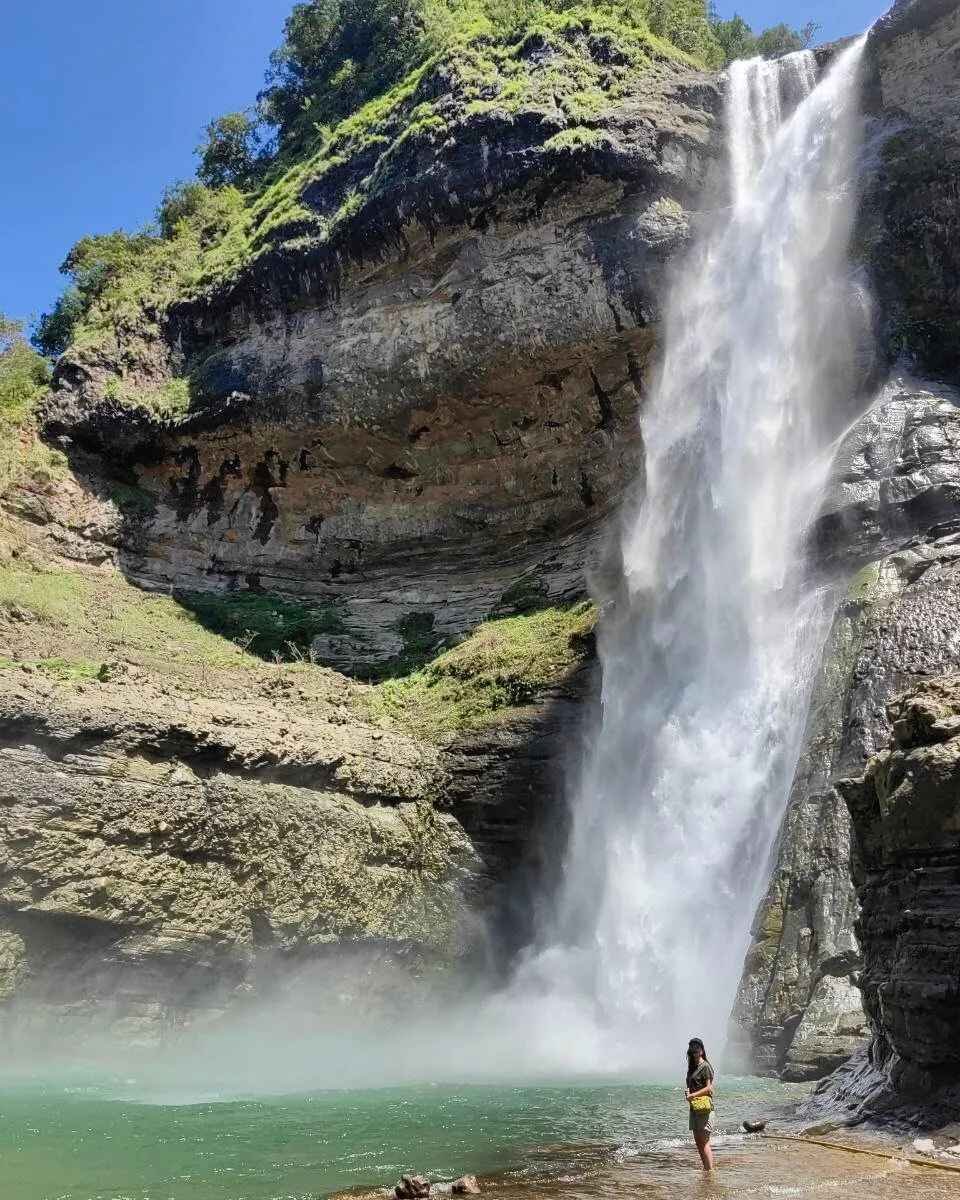
How to Go to Aw-asen Falls (Step-by-Step Directions)
When I planned my 2025 trip to Aw-asen Falls, the question I kept seeing online was: “How do I get to Aw-asen Falls from Manila or Vigan?” The journey may seem daunting at first, but once you understand the route, it’s surprisingly straightforward—and incredibly scenic. Whether you’re coming from the lowlands or the highlands, every turn reveals glimpses of the Cordilleras that frame this hidden gem in Sigay, Ilocos Sur.
The trip involves two main stages: reaching Tagudin, the gateway town of Ilocos Sur, and then traveling up the mountain roads toward Barangay Santo Rosario, where the official trail to Aw-asen Falls begins.
From Manila
If you’re traveling from Manila to Aw-asen Falls, take a northbound bus bound for Vigan or Laoag City. Reliable lines like Partas, Fariñas, and Viron Transit operate daily from Cubao or Pasay terminals.
-
Fare: ₱600–₱800 (one-way, depending on bus class)
-
Travel Time: Around 6–7 hours via NLEx–SCTEx–TPLEx highways
-
Drop-off Point: Bitalag Junction, Tagudin
From Bitalag, ride a habal-habal (motorcycle taxi) or charter a local jeep to Barangay Santo Rosario. The 24-kilometer mountain road takes about 1–1.5 hours and costs roughly ₱1,200 round trip per motorcycle. When I went, I arranged my ride through my guide from the Sigay Tourism Office, which made the uphill journey smoother and safer on the narrow roads.
From Vigan or Baguio
Coming from Vigan, take a southbound bus or van to Tagudin—a comfortable 2–3-hour ride that costs around ₱250. From Baguio City, buses bound for Laoag or Vigan pass through the scenic Naguilian Road, reaching Tagudin in about 3 hours.
Once in Tagudin, follow the same habal-habal route to Santo Rosario. For those planning a loop trip, it’s easy to include Vigan to Aw-asen Falls or even continue to La Union or Candon afterward.
Via Organized Tours or DIY
If you prefer convenience, joiner or private tours from Baguio and Manila average around ₱2,000 per person, inclusive of transportation, guide fees, and registration. For DIY travelers, contact the Sigay Tourism Office at 0916-443-0028 (Bal Quitor) to verify current conditions or reserve a local guide.
From experience, DIY gives you more freedom to explore side trips like Sangbay ni Ragsak Falls, but tours remove the stress of navigating the rough roads yourself.
Key Takeaway: The easiest route to Aw-asen Falls Sigay Ilocos Sur is via Tagudin, whether you’re traveling from Manila, Vigan, or Baguio. Allocate one full day for the trip, bring cash for habal-habal fares, and coordinate with local guides for a safe and authentic Cordillera adventure.
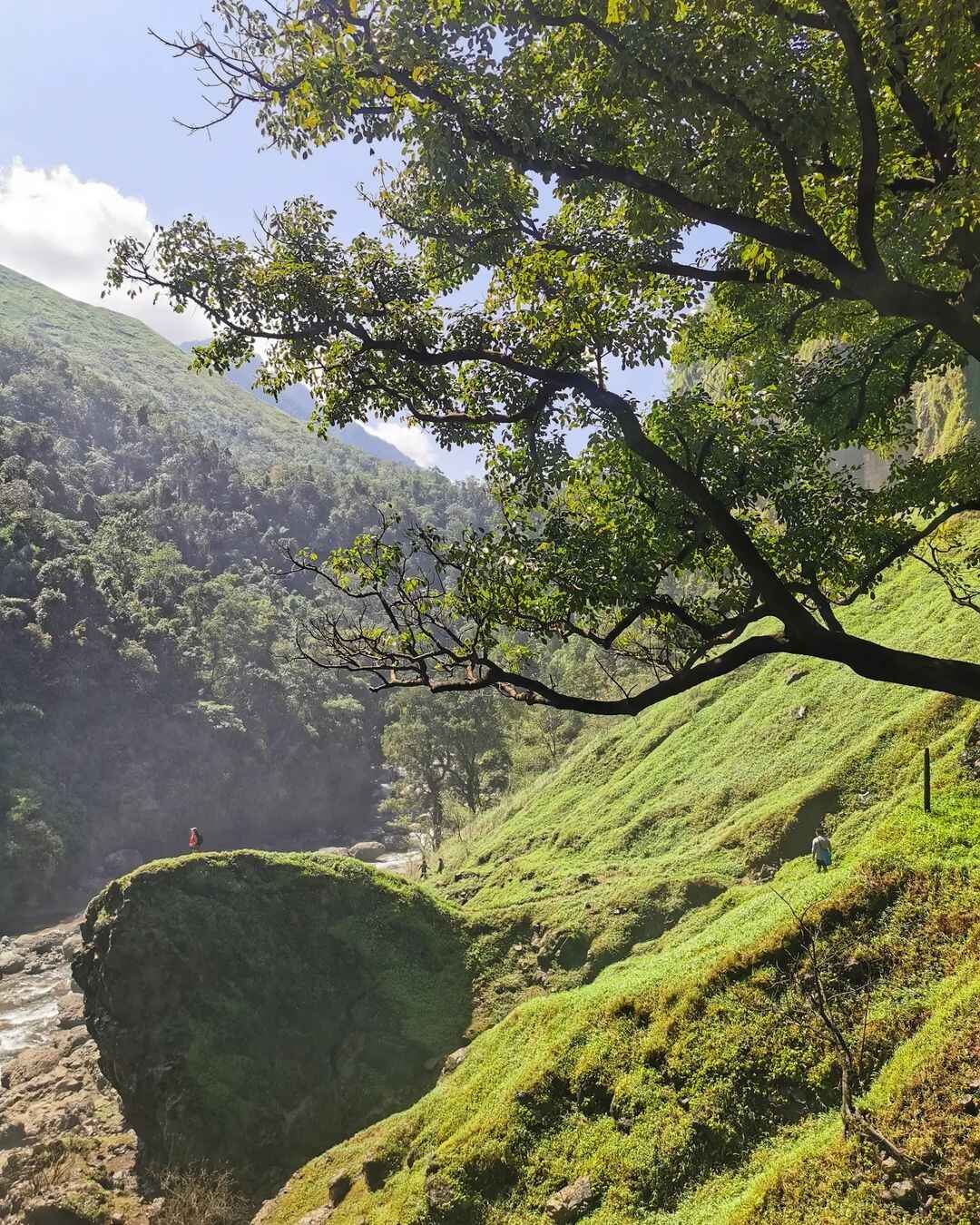
Trail Guide & Hike Difficulty — What to Expect
The trek to Aw-asen Falls begins in Barangay Santo Rosario, where the sound of running water already echoes faintly through the valley. From the registration area, the trail winds through terraced rice fields, narrow ridges, and shaded forest paths before revealing the falls in full view. It’s one of the most scenic and raw hiking trails I’ve done in Northern Luzon—unspoiled, challenging, yet deeply rewarding.
For those wondering about the aw asen falls hike difficulty, expect a moderate trail that takes 1 to 1.5 hours each way, depending on your pace and fitness level. The descent feels manageable at first, but the terrain quickly shifts from packed soil to rocky steps and uneven paths. You’ll cross a metal hanging bridge suspended above a rushing stream and wade through a shallow river crossing before tackling the final forested section that opens into the viewing area.
The real challenge comes on the return. The uphill climb is relentless—long, steep, and often under the heat of the midday sun. When I did the hike, my knees were literally shaking halfway up, reminding me that cardio training isn’t optional here. Still, the climb rewards you with breathtaking views of the Cordilleras and the quiet pride of conquering one of Ilocos Sur’s most dramatic natural attractions.
Fitness Tip: Bring at least 2 liters of water, take breaks every 15 minutes on the return leg, and wear footwear with excellent grip. Hiking poles can make a big difference on the slippery sections, especially after rain.
Key Takeaway: The trek to Aw-asen Falls is moderately challenging—perfect for hikers seeking adventure without technical climbs. Prepare for a scenic 1.5-hour descent, a heart-pumping return, and a powerful reward at the base of Ilocos Sur’s tallest waterfall.
Entrance Fees, Guide Fees & Registration Process
Before hitting the trail, all visitors must register at the Santo Rosario jump-off point, where friendly locals manage the small tourism desk. Registration is required for both safety and conservation purposes, ensuring that visitor numbers remain sustainable and guides are properly assigned.
Here are the verified 2025 rates:
| Fee Type | Amount (₱) | Details |
|---|---|---|
| Environmental Fee | ₱50 per person | Supports Sigay’s eco-tourism and trail maintenance |
| Guide Fee | ₱750 per group | Mandatory; one guide for every 5–6 hikers |
| Parking (if applicable) | ₱20–₱50 | At the registration area |
| Wi-Fi Access | ₱5–₱10 per connection | Optional “pesos Wi-Fi” hotspot |
Payments are cash-only, as there are no ATMs or card facilities in the area. You’ll receive a visitor stub before the hike, and your guide will brief you on safety reminders, trail etiquette, and “Leave No Trace” principles.
After the trek, there’s a simple wash area where you can rinse off mud before heading back to Tagudin. Mobile signal is patchy, but that’s part of Aw-asen’s charm—disconnection that leads to reconnection.
Key Takeaway: The Aw-asen Falls entrance fee and guide fee are minimal investments for safety and conservation. Bring exact cash, register early, and support the local tourism office that keeps this mountain paradise protected.
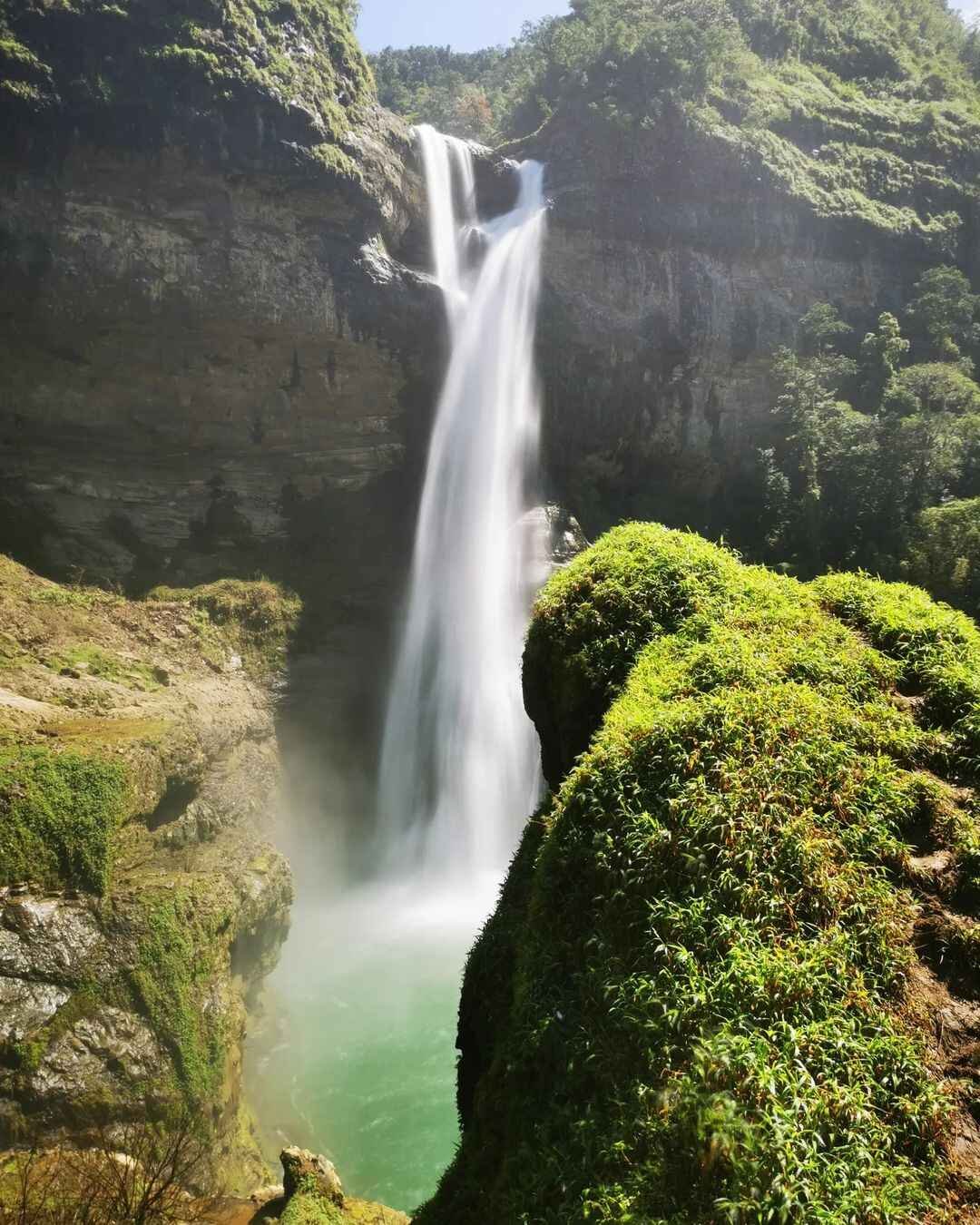
Best Time to Visit Aw-asen Falls (Weather & Seasons)
When planning your trip, timing is everything. The best time to visit Aw-asen Falls depends on what kind of experience you want—raw, thundering power or calm, accessible beauty.
During the rainy season (June to December), Aw-asen transforms into a raging spectacle. The water volume swells, and the 120-meter drop becomes thunderous and majestic. It’s perfect for photographers chasing drama, but the trails can get muddy and slippery. When I visited one August morning, even the air was heavy with mist—beautiful, but tricky for hiking.
The dry season (January to May), on the other hand, brings clearer skies, drier trails, and safer trekking conditions. However, the flow may weaken slightly during peak summer. The sweet spot is the shoulder season—November to February—when the rains have replenished the falls and the trails have begun to dry.
For those seeking solitude, visit on weekdays. On weekends, joiner tours from Ilocos and Baguio often crowd the main viewing rock.
In 2025, average temperatures in Sigay, Ilocos Sur range between 23°C to 31°C, with cooler mornings at higher elevations.
Key Takeaway: Visit Aw-asen Falls between November and February for the ideal balance—full water flow, safer trails, and fewer crowds amid Ilocos Sur’s eco-season charm.
Things to Do in Aw-asen Falls
Swim and Cool Off at the Base
Few things feel as rewarding as plunging into Aw-asen’s icy basin after the steep trek down. The water is crystal clear but very cold, perfect after an hour of hiking. The basin is deep, so swimming is best for confident swimmers. I tested the edge—it drops sharply just a few meters in. There are no lifeguards or rental vests, so safety must be self-managed. Always stay close to the shallows if unsure.
Capture the View — Iconic Photo Spots
If there’s one reason Aw-asen Falls photos go viral, it’s the trail’s perfectly placed viewpoints.
The trail peek: your first glimpse through the trees.
The iconic rock: a flat boulder fronting the full cascade—the must-have Instagram shot.
The base shot: where the water thunders straight into the frame.
Bring a waterproof bag; the mist near the base can drench your gear. Drone pilots should fly early morning before the canyon winds pick up.
Picnic and Disconnect
There are no stores or food stalls near the falls, so pack your meals in Tagudin. I often bring local empanadas and water in reusable containers. The vibe is serene—no signal, no noise, just the sound of the cascade.
Key Takeaway: The best Aw-asen Falls activities combine thrill and tranquility—swim, snap your photos, enjoy a picnic, and leave no trace of your visit.
Packing List & Safety Tips
When hiking remote destinations like this, preparation defines the experience. Here’s my tried-and-tested list of Aw-asen Falls travel essentials for 2025:
Footwear: Trail shoes or trekking sandals with strong grip (the path gets slippery).
Clothing: Quick-dry shirt, rash guard, and extra clothes for swimming.
Dry Bag: Protect cameras and phones from mist and rain.
Hydration: Bring at least 2 liters of water per person—there are no refill points.
Sun Protection: Hat, sunscreen, and shades.
First Aid Kit: Include band-aids, alcohol, and mosquito repellent.
Snacks: Energy bars or bananas for the uphill climb.
Cash: ₱50–₱1000 for fees and transportation (no ATMs nearby).
Mobile signal is intermittent across Santo Rosario. For emergencies, inform your guide or message the Sigay Tourism Office (0916-443-0028) before arrival.
When I hiked here, I underestimated the humidity—the climb back tested my endurance. Take breaks, hydrate often, and never rush the ascent.
Key Takeaway: For a safe Aw-asen Falls DIY hike, pack light but smart. Prepare for sudden weather changes, respect your limits, and enjoy the rugged charm of Ilocos Sur’s mountainside wilderness.
Where to Stay: Base Camps in Tagudin & Nearby Towns
After hiking Aw-asen Falls, I recommend staying overnight in Tagudin, the nearest lowland town where you can rest, recharge, and stock up on supplies. It’s the most convenient base for travelers looking for affordable Tagudin accommodation 2025—close enough to the jump-off yet comfortable after a day of mountain trekking.
During my visit, I stayed at Jolie Joe’s Bed and Breakfast, located near the Bitalag Junction. The rooms are cozy, Wi-Fi works well, and the owner serves good coffee for early morning departures. Another great choice is Buenavista Family Inn, a budget-friendly stay with larger rooms perfect for groups and families. Both are ideal if you want to explore Tagudin’s local markets and food stalls after your hike.
For those seeking resort-style amenities, the nearby towns of Candon (around 30 minutes north) and Bacnotan, La Union (an hour south) offer upgraded stays with pools and beach access—great options if you’re planning a longer Ilocos itinerary.
| Accommodation | Location | Rate (₱) | Highlights |
|---|---|---|---|
| Jolie Joe’s B&B | Tagudin | 1,500–2,500 | Free Wi-Fi, breakfast, near Bitalag Junction |
| Buenavista Family Inn | Tagudin | 1,000–2,000 | Spacious rooms, pool, laundry services |
| Villa Mercedes Resort | Candon | 3,000–4,000 | Garden view, air-conditioned, family-friendly |
| Alpas Oasis | Bacnotan | 5,000–6,000 | Beachfront, restaurant, bar & garden |
Key Takeaway: For those asking where to stay near Aw-asen Falls, Tagudin offers the best mix of affordability and proximity. Book early during long weekends, and plan your trip around sunrise departures for the Sigay trail.
Nearby Attractions to Add to Your Itinerary
After conquering the trail to Aw-asen, extend your adventure by visiting nearby Ilocos Sur attractions. The closest and most compatible side trip is Sangbay ni Ragsak Falls in Suyo—literally translated as “Waterfalls of Happiness.” This 30-meter cascade is easier to access, requiring just a 15-minute walk from the jump-off point in Barangay Patoc-ao. Its shallow basin makes it perfect for families or those who want a quick, refreshing dip after the strenuous Aw-asen trek.
If you’re heading north, a stop at Vigan Heritage Village, a UNESCO World Heritage site, offers a sharp contrast to the wild scenery of Sigay. Stroll along Calle Crisologo, enjoy authentic Ilocano longganisa, or take a calesa ride through the cobblestone streets.
Heading south? You can unwind in La Union’s beach towns, such as Bacnotan or San Juan, famous for surfing and sunset cafés.
Key Takeaway: When planning what to do near Aw-asen Falls, combine mountain adventure with cultural and coastal escapes—Suyo for waterfalls, Vigan for heritage, and La Union for surf and sea.
Sample Itineraries & Budget Guide
To help you visualize your trip, here are two suggested itineraries based on my recent visit:
2-Day “Weekend Warrior” Itinerary
-
Day 1: Travel from Manila or Baguio → Tagudin; overnight stay
-
Day 2: Early trek to Aw-asen Falls, side trip to Sangbay ni Ragsak Falls, then return
4-Day “Ilocos Explorer” Itinerary
-
Days 1–2: Follow the Weekend Warrior plan
-
Day 3: Head to Vigan City for a cultural tour
-
Day 4: Relax at La Union beach before traveling back
| Expense Item | DIY (₱) | Tour Package (₱) |
|---|---|---|
| Transportation | 1,200–1,500 | Included |
| Guide & Fees | 800 | Included |
| Accommodation | 1,000–2,000 | 1,000–1,500 |
| Food & Water | 500–800 | 500–800 |
| Total Estimated Budget | 2,500–4,000 | 3,000–4,000 |
Key Takeaway: Whether you choose a DIY adventure or a packaged tour, an Aw-asen Falls itinerary 2025 costs around ₱2,500–₱4,000—perfect for weekend travelers seeking both thrill and tranquility in Ilocos Sur.
Responsible Travel & Sustainability
As I stood at the base of Aw-asen Falls, surrounded by mist and mountain echoes, I understood why Sigay locals are so protective of this place. This waterfall isn’t just a tourist attraction—it’s a living ecosystem, a source of pride for the people of Ilocos Sur. Practicing eco-tourism in Ilocos Sur means traveling with intention: respecting the environment, supporting local guides, and minimizing impact.
The Sigay Tourism Office upholds a simple but powerful eco-pledge: “Take nothing but photos, leave nothing but footprints, and bring home memories, not trash.” Visitors are encouraged to carry reusable bottles, pack out all waste, and hire registered guides who ensure the safety and sustainability of every trek.
Every responsible traveler helps preserve Aw-asen’s raw beauty for the next generation.
Key Takeaway: Protecting Aw-asen means practicing Leave No Trace Aw-asen Falls principles—respect nature, support locals, and tread lightly across this mountain sanctuary.
FAQs about Aw-asen Falls
Where is Aw-asen Falls located?
Aw-asen Falls is found in Barangay Santo Rosario, Sigay, Ilocos Sur, about 1.5 hours from Tagudin, the nearest town.
How high is Aw-asen Falls?
The falls tower at approximately 120 meters (394 feet), making it the tallest waterfall in the Ilocos Region.
How difficult is the hike?
The Aw-asen Falls hike difficulty is moderate. Expect a 1-hour descent and a steep uphill return—manageable for fit beginners with stamina.
Is there an entrance or guide fee?
Yes. Visitors pay a ₱50 environmental fee and a ₱750 mandatory guide fee per group upon registration at the Santo Rosario jump-off.
When is the best time to visit?
The best time to visit Aw-asen Falls is from November to February, when the water flow is strong but the trails are dry and safe.
Key Takeaway: Plan your visit with safety, sustainability, and timing in mind—Aw-asen rewards those who prepare with purpose.
Final Thoughts — Why Aw-asen Falls Belongs on Your Bucket List
The first time I saw the 120-meter cascade of Aw-asen Falls, it felt like standing before a living mountain—its roar both humbling and healing. In that moment, every step of the steep trail made sense. The climb, the sweat, and the solitude were all part of the journey.
What makes Aw-asen special isn’t just its height—it’s the purity of the experience. There are no vendors, no noise, no crowds, only the rhythm of water meeting stone. As one of the last hidden gems of Ilocos Sur, it deserves to be explored with care and gratitude.
So before it becomes a mainstream destination, answer the call of Ilocos Sur’s hidden giant. Pack responsibly, hire local guides, and let the Cordilleras remind you how breathtaking untouched nature can still be.
Key Takeaway: Aw-asen Falls is more than a destination—it’s a pilgrimage for those who seek beauty, solitude, and meaning in nature.

